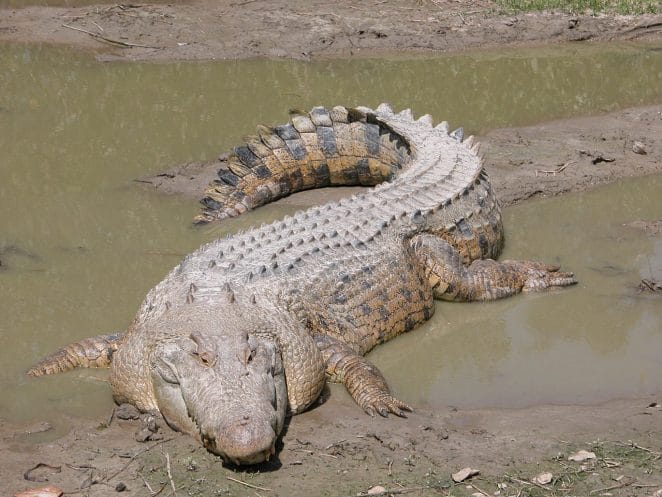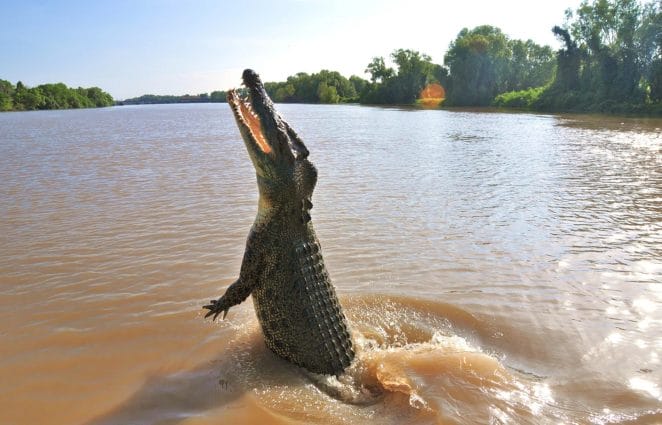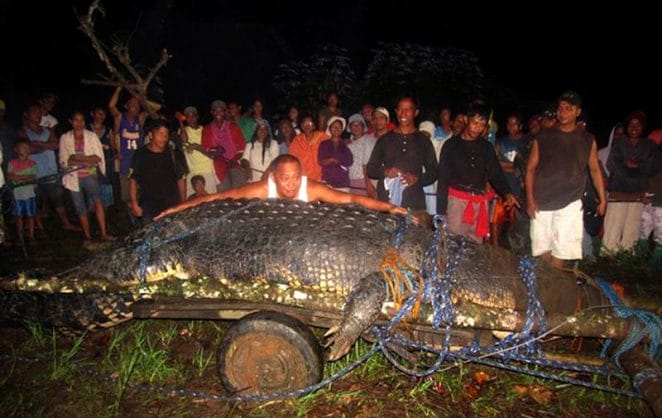The globe is a huge place, and it’s full with some very bizarre things to discover. All the reptiles on the planet are included in this bizarre collection, although it is not restricted to that number. Reptiles are a group of creatures that includes turtles, lizards, snakes, crocodiles, and alligators, among others.

The World’s Largest Reptile
The saltwater crocodile is the largest living reptile and crocodile species on the planet. The range of saltwater crocodiles stretches from northern Australia to eastern India and Southeast Asia. The average male saltwater crocodile measures 6 m (20 ft) in length and weighs around 1,000–1,300 kg (2,200–2,900 lb), whereas females are substantially smaller, measuring just under 3 m (10 ft) in length and weighing between 76 and 103 kg (168 to 227 lb).


Did You Know?
- Saltwater crocodiles, also known as sea crocodiles, have the strongest bites of any animal on the planet, and they bite with enormous energy. The biting power of a saltwater crocodile has been confirmed as the strongest ever measured in a laboratory environment for an animal, with a value of 16,414 newtons reported in the experiment (3,690 pounds-force).
- Saltwater crocodiles can swim at speeds of 24 to 29 kilometres per hour (15 to 18 miles per hour) in short bursts, which is approximately three times faster than the fastest human swimmers.
- The saltwater crocodile’s meat and eggs are commonly targeted for harvesting, and its skin is the most commercially valuable of any crocodilian species.
- Timor regards the saltwater crocodile as a sacred creature. Folklore has it that an enormous crocodile was responsible for the construction of the island. Similar and elaborate tales are told by the Papuan people, and the crocodile has long been regarded as a close relative of the Papuans (normally a father or grandfather).
- Due to saltwater crocodiles’ inability to swallow prey underwater, they must either bring it to the surface of the water or return to land to ingest it.
- The temperature of the saltwater crocodile nest is what determines the hatchlings’ gender. Females are produced in greater abundance in cooler nests, while males are produced in greater abundance in warmer nests.
- The saltwater crocodile has appeared in contemporary Australian films and on television, most notably in the “Crocodile” Dundee film series and the television series, The Crocodile Hunter.
- The largest confirmed saltwater crocodile perished in fishing net in Papua New Guinea in 1979, measuring 6.2 m (20 ft 4 in) with its dried skin and head.
- Lolong, a saltwater crocodile from the Philippines, was the largest saltwater crocodile ever captured and held in captivity. He measured 6.17 metres (20 feet 3 inches) and weighed 1,075 kilogrammes (2,370 lb). Lolong was captured in September of 2011 and died in captivity in February of 2013.
Sources:Wikipedia, Wikipedia, Oceana, Discover Wild Life, The Culture Trip





GIPHY App Key not set. Please check settings